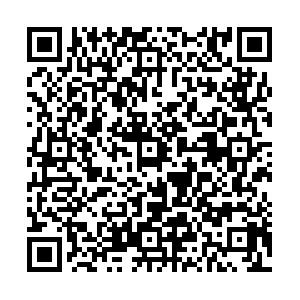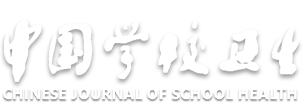The effect of maternal anxiety during pregnancy on the social-emotional development among toddlers
-
摘要:
目的 探讨母亲孕期焦虑状态对1~3岁幼儿情绪社会化发展的影响, 为生命早期科学育儿及情绪社会化发育异常儿童早期干预提供参考依据。 方法 于2022年9月—2023年3月收集南通市妇幼保健院健康体检的815名1~3岁幼儿及幼儿母亲为研究对象, 采用中国幼儿社会情绪评价量表(CITSEA)评估幼儿情绪社会化能力, 同时调取幼儿母亲孕期体检焦虑状态评估报告, 母亲孕期体检采用焦虑自评量表(SAS)评估焦虑状态。 结果 全体幼儿CITSEA外显行为域、内隐行为域、失调域和能力域得分分别为(49.40±9.48, 47.42±9.60, 48.67±10.15, 50.07±10.20)分, 其中男童外显行为域得分(50.89±9.45)高于女童(48.76±9.50)、能力域得分(49.22±10.30)低于女童(51.17±9.84), 差异均有统计学意义(t值分别为2.10, -3.03, P值均<0.05);外显行为域、内隐行为域、失调域和能力域异常检出率分别为7.36%, 7.12%, 7.61%, 7.24%, 其中男童分别为8.43%, 6.32%, 7.96%, 7.49%, 女童分别为6.19%, 7.99%, 7.22%, 6.96%, 不同性别异常率比较差异均无统计学意义(χ2值分别为1.50, 0.85, 0.16, 0.09, P值均>0.05)。母亲孕期不同焦虑状态(正常、轻度、中重度)幼儿外显行为域得分(47.77±9.52, 49.56±8.95, 52.51±9.77)、能力域得分(51.70±10.38, 49.65±10.05, 46.68±10.03)差异均有统计学意义(F值分别为7.05, 7.10, P值均<0.01);母亲孕期不同期焦虑状态幼儿外显行为域、能力域异常检出率(4.81%, 7.54%, 11.17%;4.81%, 6.96%, 11.73%)差异均有统计学意义(χ2值分别为6.60, 7.98, P值均<0.05)。 结论 母亲孕期焦虑状态对幼儿情绪社会化发展具有不利影响。应提供多维度社会支持, 关注孕期家庭环境和教育, 改善儿童情绪社会化水平。 Abstract:Objective To explore the impact of maternal anxiety during pregnancy on social-emotional development of toddlers aged 1-3 year old, so as to provide references for scientific early parenting and early intervention for toddlers with social-emotional difficulties. Methods From September 2022 to March 2023, a total of 815 toddlers aged 1-3 who underwent physical examinations and their mothers at Nantong Maternal and Child Health Hospital were enrolled. The Chinese Infant Toddler Social and Emotional Assessment (CITSEA) was used to evaluate the social-emotional ability among toddlers. Maternal anxiety evaluated using the Self-rating Anxiety Scale (SAS) during prenatal visit was collected. Results The average scores on the externalizing, internalizing, dysregulation and competence domains of the CITSEA were (49.40±9.48, 47.42±9.60, 48.67±10.15, 50.07±10.20), respectively. Among boys, the score of externalizing domain (50.89±9.45) was higher than that of girls (48.76±9.50), while the score of competence domain (49.22±10.30) was lower than that of girls (51.17±9.84), and the differences were statistically significant(t=2.10, -3.03, P < 0.05). The detection rates of abnormalities in the externalizing, internalizing, dysregulation, and competence domains were 7.36%, 7.12%, 7.61%, and 7.24%, respectively. Among them, boys (8.43%, 6.32%, 7.96%, 7.49%) and girls (6.19%, 7.99%, 7.22%, 6.96%) showed no statistical differences (χ2=1.50, 0.85, 0.16, 0.09, P>0.05). There were significant differences in externalizing domain scores(47.77±9.52, 49.56±8.95, 52.51±9.77) and competence domain scores(51.70±10.38, 49.65±10.05, 46.68±10.03) among toddlers of different maternal anxiety(normal, mild, moderate to severe) (F=7.05, 7.10, P < 0.01). There were significant differences in the abnormal detection rate of externalizing domain (4.81%, 7.54%, 11.17%) and competence domain(4.81%, 6.96%, 11.73%)(χ2=6.60, 7.98, P < 0.05). Conclusion Maternal anxiety during pregnancy has a negative impact on the social-emotional development among toddlers. In order to improve social-emotional development of toddlers, multidimensional social support and education during pregnancy should be carried out. -
Key words:
- Fertile period /
- Mothers /
- Anxiety /
- Emotions /
- Mental health /
- Child, preshool
1) 利益冲突声明 所有作者声明无利益冲突。 -
表 1 母亲孕期不同焦虑状态间幼儿CITSEA各维度得分比较(x±s)
Table 1. Comparison of CITSEA scores in various demensions among toddlers with different anxiety states during pregnancy(x±s)
母亲孕期焦虑 人数 外显行为域 内隐行为域 失调域 能力域 正常 291 47.77±9.52* 47.84±9.85 47.87±10.33 51.70±10.38* 轻度 345 49.56±8.95 47.18±9.19 49.01±10.12 49.65±10.05 中重度 179 52.51±9.77* 47.33±9.78 48.96±10.04 46.68±10.03* F值 7.05 0.40 1.25 7.10 P值 <0.01 0.67 0.29 <0.01 注: *与轻度焦虑比较,P<0.05。 表 2 母亲孕期不同焦虑程度幼儿CITSEA各维度异常检出率比较
Table 2. Comparison of the detection rate of CITSEA abnormalities in various dimensions among toddlers with different maternal anxiety during pregnancy
母亲孕期焦虑 人数 外显行为域 内隐行为域 失调域 能力域 正常 291 14(4.81) 19(6.53) 21(7.22) 14(4.81) 轻度 345 26(7.54) 22(6.38) 23(6.67) 24(6.96) 中重度 179 20(11.17) 17(9.50) 18(10.06) 21(11.73) χ2值 6.60 1.45 2.02 7.98 P值 0.04 0.48 0.36 0.02 注: ()内数字为检出率/%。 -
[1] 韩晨思宇. 3~6岁幼儿网络媒介使用与情绪社会化的关系研究[D]. 福州: 福建师范大学, 2021.HAN C S Y. A Study on the relationship between online media use and emotional socialization in 3-6 year old children[D]. Fuzhou: Fujian Normal University, 2021. (in Chinese) [2] 苏林雁. 儿童情绪早期社会化发展[J]. 中国儿童保健杂志, 2019, 27(9): 929-931. https://www.cnki.com.cn/Article/CJFDTOTAL-ERTO201909001.htmSU L Y. Early socialization development of children's emotions[J]. Chin J Child Health Care, 2019, 27(9): 929-931. (in Chinese) https://www.cnki.com.cn/Article/CJFDTOTAL-ERTO201909001.htm [3] BERONA J, SROKA A W, GELARDI K L, et al. Maternal socialization of emotion and the development of emotion regulation in early adolescent girls[J]. Emotion, 2022, 13(8): 1371-1374. [4] SHIN E, SMITH C L, DEVINE D, et al. Predicting preschool children's self-regulation from positive emotion: the moderating role of parental positive emotion socialization[J]. Early Child Res Q, 2023, 45(62): 2104-2106. [5] ZHU D, CHEN Y, LI L, et al. Family functioning, emotion socialization, and children's social competence: gender-specific effects in Chinese families[J]. J Child Fam Stud, 2022, 32(1): 217-219. [6] DENHAM S A, MORTARI L, SILVA R. Preschool teachers' emotion socialization and child social-emotional behavior in two countries[J]. Early Educ Dev, 2022, 33(5): 1408-1411. [7] 王惠珊, 张建端, 黄小娜, 等. 中国城市幼儿情绪及社会性发展量表标准化的信度和效度分析[J]. 中国儿童保健杂志, 2009, 17(3): 271-274. https://www.cnki.com.cn/Article/CJFDTOTAL-ERTO200903013.htmWANG H S, ZHANG J D, HUANG X N, et al. Reliability and validity of standardized Chinese Version of Urban Infant-toddler Social and Emotional Assessment (CITSEA) Scale[J]. Chin J Child Health Care, 2009, 17(3): 271-274. (in Chinese) https://www.cnki.com.cn/Article/CJFDTOTAL-ERTO200903013.htm [8] 王征宇, 迟玉芬. 焦虑自评量表(SAS)[J]. 上海精神医学, 1984, 2(2): 73-74. https://www.cnki.com.cn/Article/CJFDTOTAL-JSYI198402008.htmWANG Z Y, CHI Y F. Self Rating Anxiety Scale (SAS)[J]. Shanghai Arch Psychiatry, 1984, 2(2): 73-74. (in Chinese) https://www.cnki.com.cn/Article/CJFDTOTAL-JSYI198402008.htm [9] REAUME C, SEDDON J A, COLWELL S, et al. Racial-ethnic differences in positive emotion socialization: links to child emotional lability[J]. J Appl Dev Psychol, 2022, 81(11): 459-461. [10] CHEN S, RICHARDSON S, KONG Y, et al. Association between parental education and simultaneous malnutrition among parents and children in 45 low- and middle-income countries[J]. JAMA Network Open, 2023, 6(1): 886-890. [11] HASSANZADEH-AVVAL M, MASHHADI A, SUVEG C, et al. Combined emotional socialization training and family accommodation modification: impact on emotional regulation and anxiety symptoms in anxious children[J]. Behav Ther, 2022, 53(2): 3210-3215. [12] BOLSTAD E, HAVIGHURST S S, TAMNES C K, et al. A pilot study of a parent emotion socialization intervention: impact on parent behavior, child self-regulation, and adjustment[J]. Front Psychol, 2021, 12(8): 1120-1123. -

 点击查看大图
点击查看大图
计量
- 文章访问数: 472
- HTML全文浏览量: 277
- PDF下载量: 27
- 被引次数: 0





 下载:
下载: